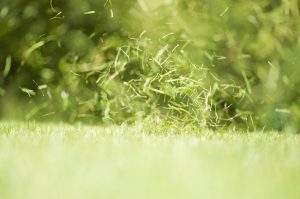When is the Best Time to Aerate a Lawn for Optimal Health?

A lush, green lawn is a source of pride for any homeowner, but maintaining its health and beauty requires more than just mowing and watering. Aeration is a crucial step in lawn care, providing essential benefits that promote healthy grass growth and root development. Learn more about the ideal time to aerate your lawn depending on your grass type, and explore the different methods and tools to ensure the most effective process.
Why Do You Aerate Your Lawn?
Over time, several factors can contribute to soil compaction in your lawn including parking a vehicle on your lawn or walking on it, especially during heavy use periods which can compress the soil. Soil compaction may also be more common in certain soil types, for example clay soils are naturally more dense and prone to compaction, requiring more frequent aeration.
Compacted soil poses several challenges for your lawn including restricting the flow of essential elements like air water and nutrients, limiting root growth and promoting thatch build up. Thatch is a layer of dead grass and organic matter that accumulates on the soil surface. Compacted soil hinders its natural decomposition, leading to a thicker thatch layer.
Proper aeration can address these issues by creating channels in the soil. These channels allow air, water, and nutrients to penetrate deeper, reaching the grass root zone more effectively. Aeration can promote deeper root growth, increasing access to essential resources and enhancing drought tolerance. Effective aeration also allows for better thatch decomposition by promoting microbial activity in the soil, leading to a healthier lawn.
How Often Should You Aerate Your Lawn?
The frequency of aeration depends on several factors, including:
- Soil type: Clay soil compacts more easily and requires more frequent aeration (once a year) compared to sandy soil (once every 2-3 years).
- Traffic: Lawns with high foot traffic or vehicle use may benefit from more frequent aeration.
- Grass type: Cool-season grasses generally benefit from aeration in early spring and fall, while warm-season grasses benefit from aeration in late spring or early summer.
Is It Better to Aerate a Wet or Dry Lawn?
Contrary to popular belief, aerating a slightly moist lawn is ideal. Dry, hard soil makes it difficult to create clean core aerations, while overly wet soil can lead to soil compaction around the core holes, negating the benefits. Aim for a time when the soil is moist but not soggy, allowing you to easily push the aerator tines into the ground and create clean core plugs.
What Happens When You Aerate Your Lawn?
Aeration involves creating small holes or cores in the soil throughout your lawn. There are two main methods for aeration:
Spike aeration
This method uses solid tines that poke holes in the soil without removing any material. It’s most effective for alleviating mild soil compaction and can be repeated more frequently.
Core aeration
This method utilizes hollow tines that remove small plugs of soil (core plugs) from the ground. Core aeration is more effective for addressing severe soil compaction and promoting deeper root growth.
What to Use to Aerate Your Lawn
There are various tools available for lawn aeration, ranging from manual options to professional machines:
- Manual core aerator: This hand-held tool is suitable for small lawns, allowing you to create individual core plugs.
- Shoe aerators: These spiky sandals are easy to use for small areas but can be tiring for larger lawns.
- Tow-behind core aerator: This option attaches to your lawn tractor or ride-on mower, making aeration of larger areas easier.
- Professional core aeration: Lawn care companies utilize specialized core aeration machines for efficient and comprehensive aeration of large lawns. These powerful machines can handle various soil types and offer the benefit of experienced professionals ensuring proper depth and spacing of core plugs.
Call Our Lawn Care Professionals to Learn More
While DIY aeration is possible for small lawns, seeking professional assistance offers several advantages. Our experienced team possess the knowledge and expertise to assess your lawn’s specific needs and recommend the most appropriate type and timing of aeration. We have access to powerful, specialized equipment that can handle various soil types and lawn sizes effectively, ensuring thorough aeration. We can combine aeration with overseeding to rejuvenate your lawn by promoting seed germination and establishment in the newly created core holes.
Let our Florida lawn care professionals save you time and effort, allowing you to enjoy your lawn without the hassle of aerating it yourself!
Consistent care, including regular aeration, is crucial for creating a healthy, vibrant lawn. By understanding the importance of aeration, the ideal timing for your grass type, and the benefits of seeking professional lawn care, you can take the necessary steps to ensure your lawn thrives for years to come.
When is the Best Time to Aerate a Lawn for Optimal Health? in Orlando FL and surrounding counties
Serving satisfied customers in:


